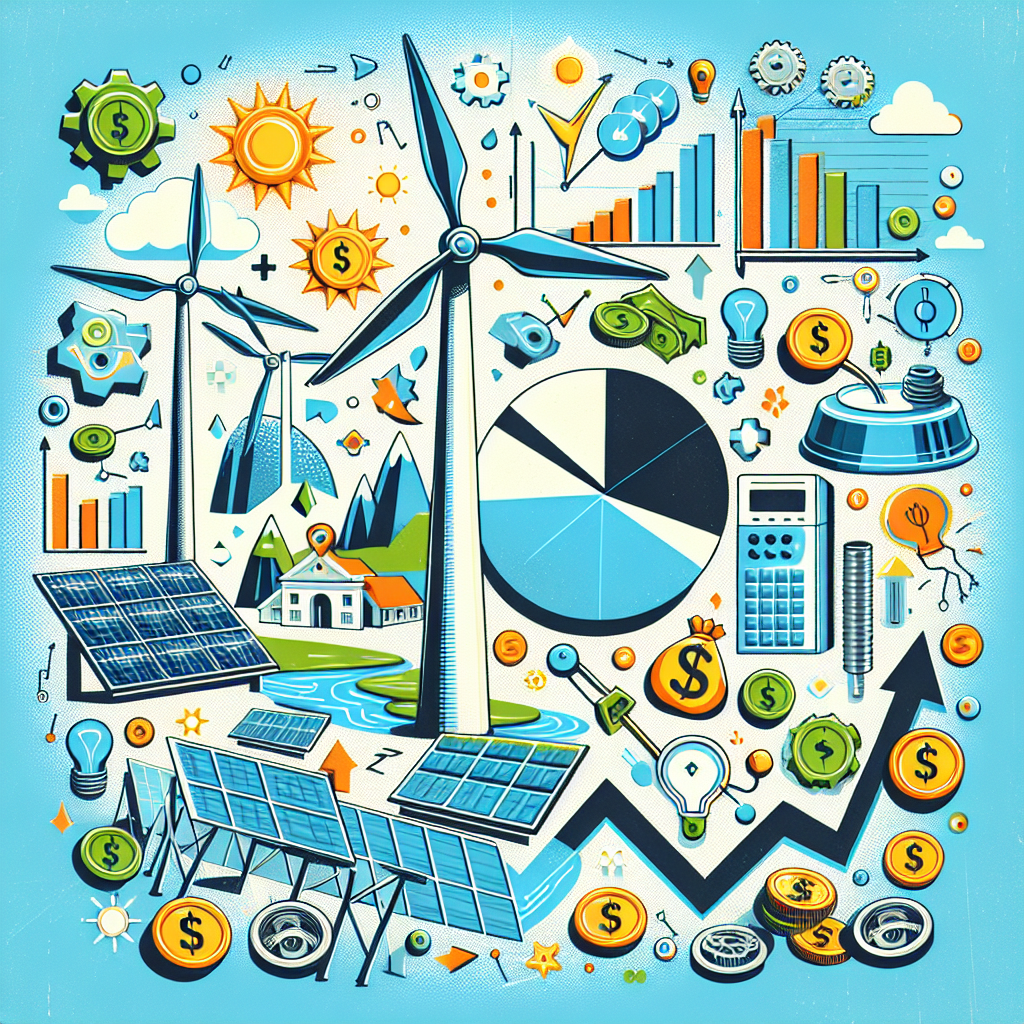Renewable energy sources have been gaining popularity in recent years as a cleaner and more sustainable alternative to traditional fossil fuels. Not only are renewables better for the environment, but they also have a positive impact on the economy. The shift towards renewable energy has led to the creation of new jobs, increased investment in infrastructure, and reduced energy costs for consumers. In this article, we will explore how renewable energy affects the economy and why it is essential for future growth and sustainability.
The rapid growth of renewable energy technologies, such as solar, wind, hydroelectric, and geothermal power, has created a vast number of job opportunities. According to a report by the International Renewable Energy Agency (IRENA), the renewable energy sector employed over 11 million people worldwide in 2018. This number is expected to continue to grow as more countries invest in renewable energy technologies to meet their climate goals.
In addition to job creation, renewable energy also drives economic growth through increased investment in infrastructure. The construction and maintenance of renewable energy projects require a significant amount of capital, which in turn stimulates economic activity. According to the U.S. Department of Energy, every $1 million invested in renewable energy creates more jobs and economic activity than the same amount invested in fossil fuels.
Renewable energy also helps to reduce energy costs for consumers. As more renewable energy sources come online, the overall cost of energy production decreases. This is due to the fact that renewable energy technologies have lower operating costs than traditional fossil fuel plants. This translates into lower electricity bills for consumers, leaving them with more disposable income to spend on other goods and services.
Furthermore, renewable energy helps to reduce the reliance on imported fossil fuels, which can be volatile in price and supply. By diversifying the energy mix with renewables, countries can reduce their exposure to fluctuations in global energy markets and increase energy security. This, in turn, leads to a more stable economy and reduced trade deficits.
Another economic benefit of renewable energy is the potential for innovation and technological advancement. As renewable energy technologies continue to evolve and improve, there is a growing demand for research and development in this sector. This leads to new inventions, job opportunities, and economic growth. In fact, many countries are using renewable energy as a driver of economic development and innovation.
Despite these positive impacts, there are some challenges associated with the transition to renewable energy. One of the main concerns is the initial cost of investing in renewable energy technologies. While the long-term benefits are clear, the upfront costs can be a barrier for some countries and businesses. However, many governments offer incentives, such as tax credits and subsidies, to help offset these costs and encourage investment in renewables.
Another challenge is the intermittent nature of some renewable energy sources, such as solar and wind power. These sources rely on environmental conditions, such as sunlight and wind, to generate electricity. This can lead to fluctuations in energy production, which can be challenging for grid operators to manage. However, advancements in energy storage technology are helping to mitigate these issues by storing excess energy for use when conditions are not optimal.
Overall, the transition to renewable energy is essential for the economy’s long-term sustainability. By creating jobs, driving economic growth, reducing energy costs, and promoting innovation, renewable energy is a critical driver of economic development. As the world continues to move towards a more sustainable future, the benefits of renewable energy will become increasingly apparent.
Frequently Asked Questions:
1. Is renewable energy more expensive than fossil fuels?
While there are higher upfront costs associated with renewable energy technologies, the long-term benefits outweigh the initial investment. As technology continues to improve and scale, the cost of renewable energy is becoming more competitive with fossil fuels.
2. How does renewable energy impact job creation?
Renewable energy technologies create a significant number of jobs in manufacturing, construction, installation, and maintenance. According to the IRENA, the renewable energy sector employed over 11 million people worldwide in 2018.
3. What are some challenges associated with renewable energy?
Some challenges associated with renewable energy include the initial cost of investment, the intermittent nature of some renewable energy sources, and the need for advancements in energy storage technology. However, these challenges are being addressed through incentives, innovation, and technological advancements.
4. How does renewable energy reduce energy costs for consumers?
Renewable energy sources have lower operating costs than traditional fossil fuel plants, leading to a decrease in the overall cost of energy production. This, in turn, translates into lower electricity bills for consumers.
5. What are some government incentives for investing in renewable energy?
Many governments offer incentives, such as tax credits, subsidies, and grants, to encourage investment in renewable energy technologies. These incentives help to offset the initial cost of investment and make renewables more attractive for businesses and consumers.
